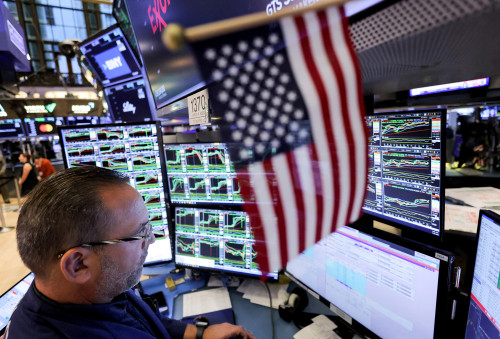By Saqib Iqbal Ahmed
NEW YORK (Reuters) – Wall Street’s most watched gauge of investor anxiety rose to a three-week high on Friday as stock indexes sold off following a an upbeat jobs report that pushed back market expectations for further Federal Reserve interest rate cuts.
The Cboe Volatility Index – an options-based indicator that reflects demand for protection against drops in the stock market – was last up 1.1 points to 19.18. The index reached 20.31, its highest since Dec. 20, earlier in the session.
A reading of 20 or higher on the VIX is associated with robust demand for options protection. Friday’s rise in the index – often dubbed the “Wall Street fear gauge” – pointed to investors waking up to the risks that lurk for stocks even as the S&P 500 remains within 5% of the record high hit in early December.
“Volatility is picking up and interest rate markets are doing interesting things,” said Michael Purves, CEO of Tallbacken Capital Advisors.
“That’s putting a lot of pressure on an equity market that has very extended valuations,” he said.
Longer-dated U.S. Treasury yields jumped to their highest levels since November 2023 on Friday after data showed employers added 256,000 jobs in December, far surpassing economists’ expectations, while the unemployment rate fell.
Worries that the incoming Donald Trump administration’s policies will increase an already bloated fiscal deficit and revive inflation have helped ignite a rally in Treasury yields in recent weeks with the benchmark U.S. 10-year Treasury yield inching closer to 5%.
Traders in the equity options market have responded by lapping up defensive options contracts, with VIX call options -contracts that offer protection against a market pullback – drawing buyers.
On Friday, some 400,000 VIX call options changed hands by 12:30 p.m. (1730 GMT), at 1.5 times the usual pace, according to Trade Alert data.
“The market has a decidedly risk-off tone,” Mark Hackett, Chief Market Strategist at Nationwide, said in a note.
“The tone of the market and the behavior of investors have seen a notable shift,” he said.
(Reporting by Saqib Iqbal Ahmed; Editing by Nick Zieminski)











